The ColecoVision: A Forgotten Relic of Console History
When it comes to classic retro console gaming, it’s impossible to exclude Atari from the list of best console manufacturers. Atari dominated the console market during the 1970s and the 1980s. However, one of the most overlooked consoles of that same era is the ColecoVision.
For many, even the most hardcore retro gaming enthusiasts, the name ColecoVision will fail to ring a bell. And that’s why today we’ll be talking about the underrated ColecoVision and shining the spotlight on it.
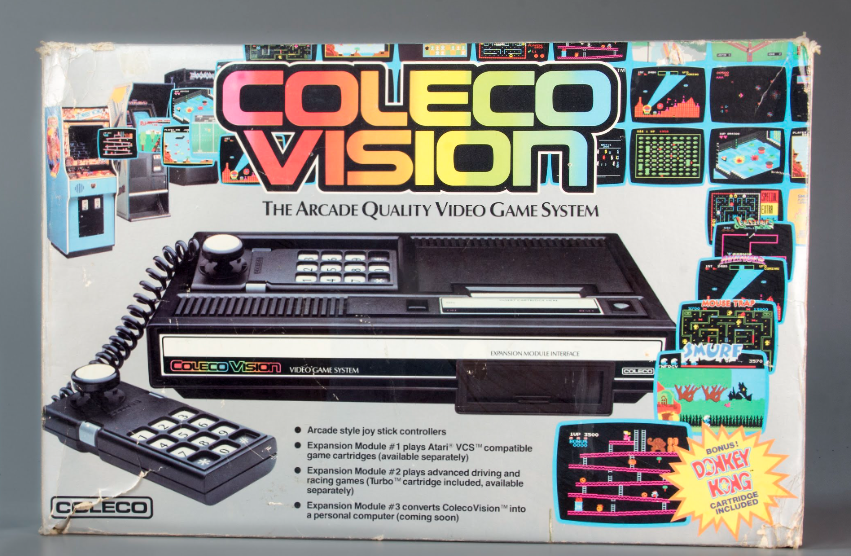
Table of Contents
The History of the ColecoVision
| Release Date | August 1982 |
| Sales | More than 2 million units sold |
| Available time period | 1982-85 |
| Iconic Titles | Donkey Kong, Pac-Man, Pitfall, etc. |
| Launch Price | $175 |
During the mid-1970s, Pong was the most popular game around, with everyone camping out in arcades to play the game (simpler times). The first ever video game consoles were released during that time, and each aimed to deliver Pong to the comfort of everyone’s homes.
But Pong was a copyrighted property of Atari, and as most console developers would not be able to offer Pong on their consoles, on account of Atari promoting their own Atari Home Pong. Therefore, they decided to create Pong rip-offs under different names.
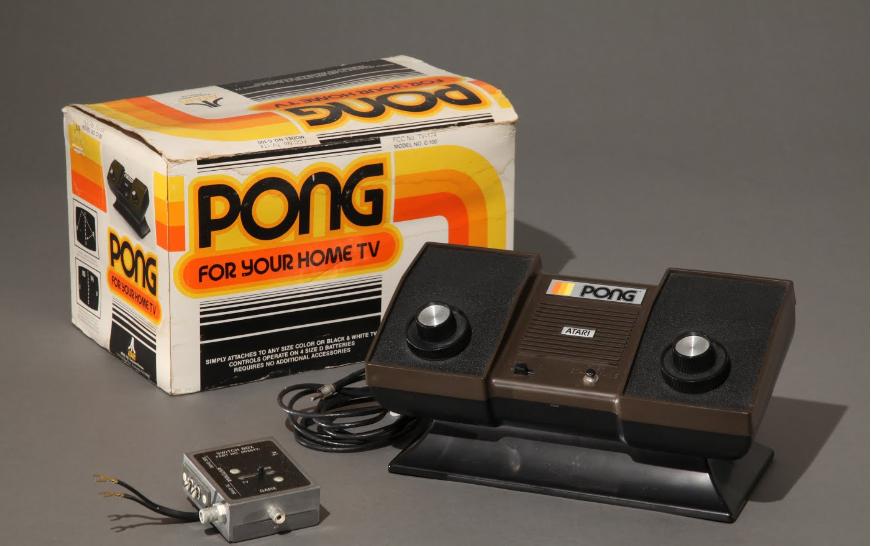
As video games were relatively new at that time, few laws existed for them. Moreover, there was only 1 company that manufactured chips for consoles and Pong; General Electric (GE). GE did not have any exclusive agreement with any one specific firm. Therefore, whoever wanted to get into the video game business could get their chips from GE release their own Pong rip-off.
Since there was already doubt that Atari had copied Tennis for Two to create Pong, these rip-offs were allowed to exist. Coleco (Connecticut Leather Company) introduced their own Pong clone Tennis on their console, the Telstar.
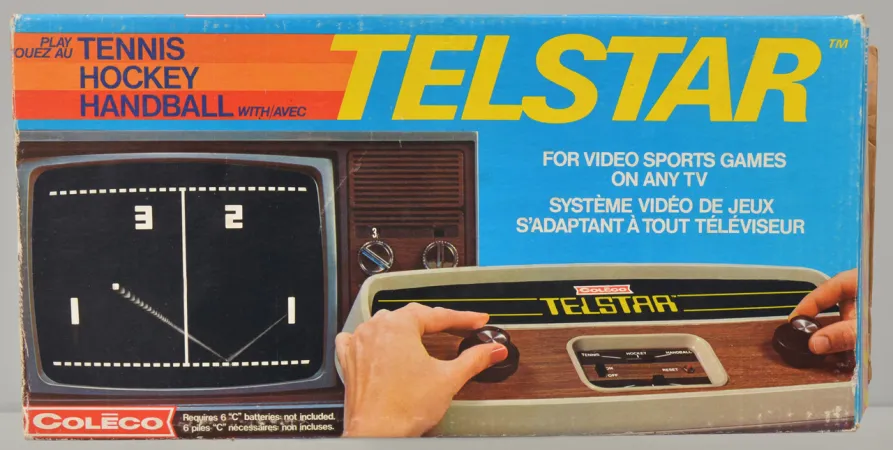
Due to the rise in the number of Pong rip-offs, Atari realized the need for variety and launched the infamous Atari 2600 in 1977. The 2600 ruled the market with an iron grip until Coleco launched the Colecovision in 1982 and shook things up. Coleco had taken a page out of Atari’s own book again and used it against them.
Read More: The Ultimate Guide to Vimm’s Lair – Classic Games & ROMs
The ColoecoVision’s Launch
Due to the launch of Commodore 64 and several other factors, the price for computer parts and overall, computer hardware had decreased greatly. Coleco had taken advantage of this situation to develop the ColecoVision. The Vision had the most powerful hardware of any console during that time, but Coleco knew that the Vision needed something special to be a guaranteed hit.
Atari, and many others had long been hoping to acquire the rights for Donkey Kong, Nintendo’s latest arcade hit. Coleco beat everyone in the race and convinced Nintendo to grant them the rights for Donkey Kong so that they could develop it for the Vision. The result was a huge success; they were able to create a near-flawless console port of Donkey Kong for the Vision.

Donkey Kong was sold as a pack-in with the ColecoVision, similar to the modern PS5 bundles today. As a result, the Vision’s popularity skyrocketed. Everyone wanted the Vision as it allowed them to play Donkey Kong in their homes, rather than the crowded arcades. Because it hadn’t been done by anyone before, the concept of consoles bundled with games was also revolutionary and defined a trend for future markets.
The ColecoVision’s Design
At the first glance, the ColecoVision looks like a VCR crossed with an old landline telephone set. Maybe we’ve become accustomed to the modern stylish and sleek look of consoles, but it should be noted that during this time, consoles were a relatively new technology, and the main focus was on their performance, not the aesthetics and, unfortunately, nor the build quality.
The ColecoVision has a flat black body with a silver strip on the front. The flat body has a cavity on the top that houses its 2 gamepads. The cartridge slot is on on top of the console. The console’s body was of a subpar quality and easily susceptible to damage.

The gamepads had a directional stick, a 12-button numeric keypad and 2 buttons on either side of each gamepad. They were connected to the console via a short, coiled wire. Like the console itself, the gamepads were of a subpar quality and easily prone to damage.
Read More: Which SEGA Dreamcast Emulators to Use on Windows 10?
Expansion Modules
In order to capitalize on the strong initial sales, Coleco announced Expansion Modules; additional hardware that aimed to augment the Vision’s capabilities, thanks to its powerful hardware. There were 3 Expansion Modules released. While the first Expansion Module was also a smash-hit, the second and third Modules, eventually led to its demise.
⤷ Expansion Module #1: Atari 2600 Expansion
The Expansion that allowed the ColecoVision to go head-to-head against its main rival, the Atari 2600, was nothing but an Atari 2600 rip-off. This module made the Vision compatible with every Atari 2600 game. The Vision itself only provided the power and the hardware input required by the module, and the module did the rest of the job itself.
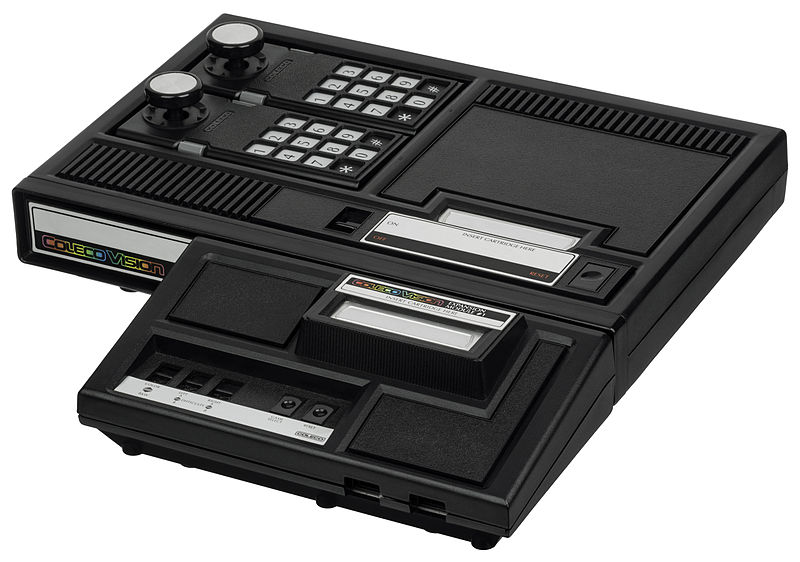
Atari could not let this daylight robbery pass, and sued Coleco over its expansion. As very little laws were in place for video game technology during that time, Coleco managed squeeze their way out of this dilemma by claiming that it used standard run-of-the-mill parts to produce the module and since no part of the Atari 2600 was patented, Coleco was able to get away with it.
The module crowned the ColecoVision as the console with the largest library of games (more than 120 games) at that time, and further solidified the Vision’s position as the best console in the market.
⤷ Expansion Module #2: Driving Controller
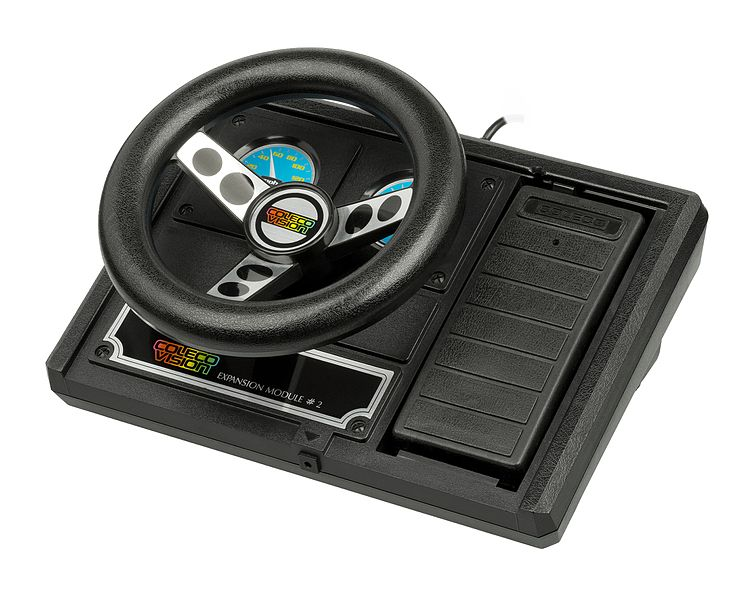
The Driving Controller was a steering wheel controller with a gas pedal, that was bundled with Turbo, a racing game. The gas pedal was simply an on/off switch. Even though it was designated as an Expansion Module, the Driving Controller plugged in the controller port and not the Expansion Module Port of the Vision. It was compatible with only a handful of other racing games and not that successful.
Read More: The Best Alternatives to Logitech G29 Racing Wheel in 2023
⤷ Expansion Module #3: Super Game Module
The Super Game Module would never see the light of day as it was cancelled in favor of the Adam computer system (more on this later). The Super Game Module aimed to add a tape drive to the Vision that would also carry extra storage and memory. Games would be sold in a tiny tape format called “wafers,” which allowed them to be bigger in size and load up directly from the tape drive.
Years later in 2013, Opcode Games released a fan-made version of the Super Game Module for the homebrew community. This modern release did not support tape drives, but still worked to enhance the original console’s capabilities by mainly increasing the RAM from 1KB to 32KB. It also works with the Adam and was officially licensed by Coleco.
Other Controllers
There were 2 other special controllers released for the ColecoVision:
1. The Roller Controller

The Roller Controller was a trackball controller bundled with the console port of the arcade game Slither. It had a “joystick mode” switch on it, that allowed it to be used on every other game as a normal joystick.
2. The Super Action Controller Set

The Super Action Controller Set was a pair of handheld joysticks bundled with Super Action Baseball. Each joystick had ball-top stick, a 12-button numeric keypad, 4 action buttons and a speed roller. It was also supported by Super Action Football, Rocky Super Action Boxing and the console port of Front Line.
The Adam Computer Debacle
In 1983, the Vision was selling really well and now Coleco wanted to cement their name in video game history. Expansion Module #3, or the Super Game System was scrapped in favor of the Adam computer system. The Adam computer system was a normal home computer, with all the capabilities of the ColecoVision built into it. It was launched in October 1983.

The Adam computer also carried a keyboard, a printer, a unique tape drive for an exclusive medium; the Digital Data Packs (DDPs). Like every home computer, it had a word processor and a typewriter application. It also sported very powerful hardware. Compared to its counterpart Commodore 64, which sold for $200 at launch without any peripherals, the Adam launched at a whopping price tag of $725.
Although the concept was pretty solid and unique, with many expecting it to succeed, the Adam computer was a complete failure. Many users returned their Adam systems almost immediately. It was plagued with a plethora of issues on launch, with the most notable being:
- The DDPs were very unreliable and not as fast as floppy disks, that were emerging during that time.
- The Adam computer emitted an electromagnetic pulse while being booted up that corrupted or destroyed any digital media close to it; namely the DDPs. Furthermore, Coleco’s instruction manual explicitly stated that the user should insert the DDP in the tape drive before booting up the Adam.
- The power supply for the Adam was present in its printer. Therefore, if the printer was damaged or absent, the Adam wouldn’t power up at all.
- Its high price was a major factor; if one bought the Commodore 64, its peripherals and the ColecoVision all together, they would still manage to save a few bucks compared to buying the Adam.
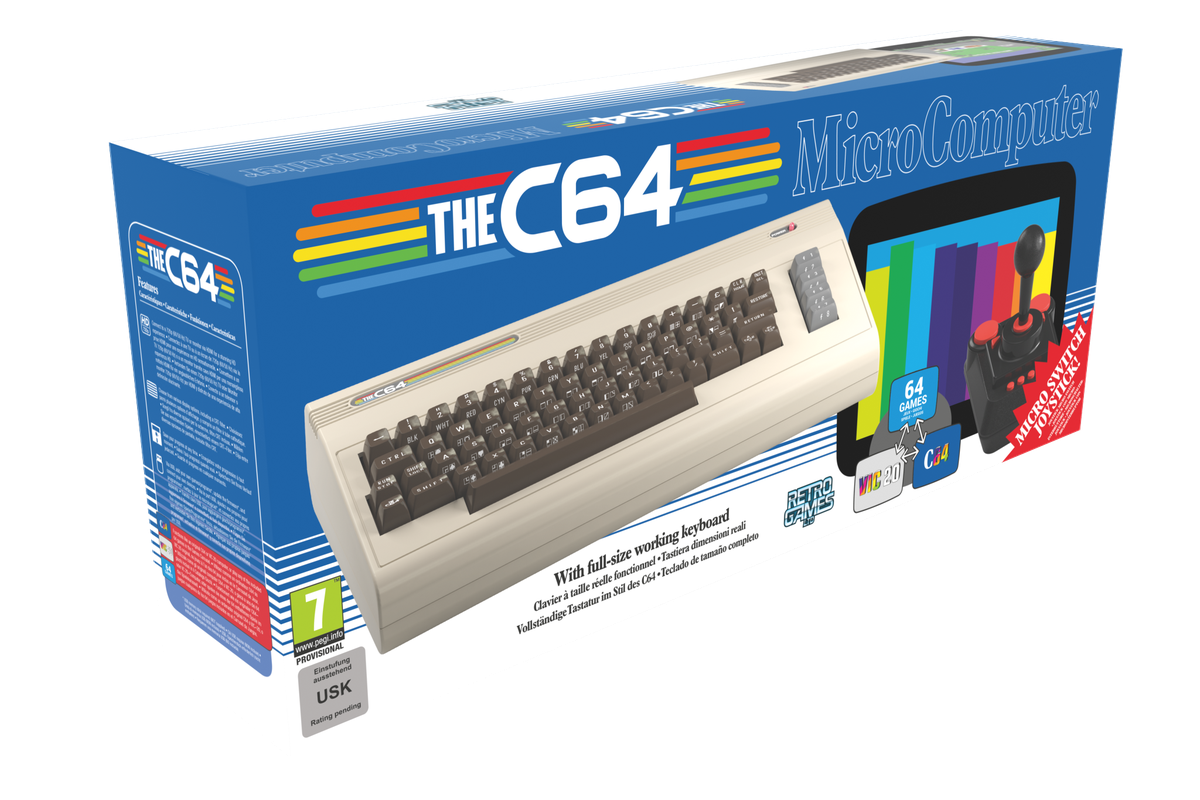
Read More: PlayStation Portal vs PSP & PS Vita: How Does it Stack Up?
The ColecoVision’s Demise and Legacy
The failure of the Adam computer sealed Coleco’s fate in the video game market. Despite Coleco releasing fixes and dropping prices for the Adam later, the damage had already been done. Coleco reported that it lost over $258 million due to the Adam’s failure. In January 1985, Coleco discontinued the Adam, with the ColecoVision sharing the same fate shortly after. In 1988, Coleco declared bankruptcy.
Although the ColecoVision’s era was a brief one, its impact on future consoles is noteworthy. The concept of bundling games with the consoles was introduced by the ColecoVision. It inspired Nintendo to dip its foot in the video game market and develop its own console. This console would be the iconic Nintendo Entertainment System (NES).
 Reviewed by
Reviewed by 




